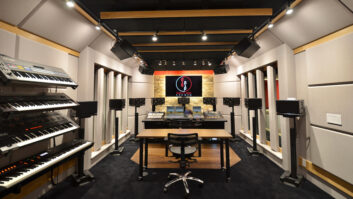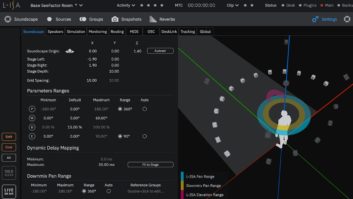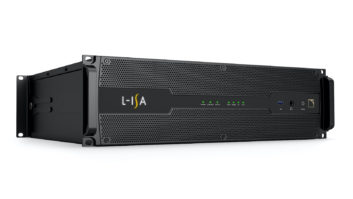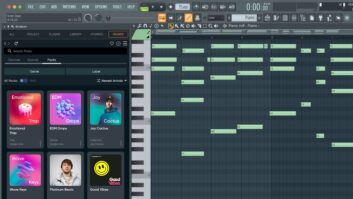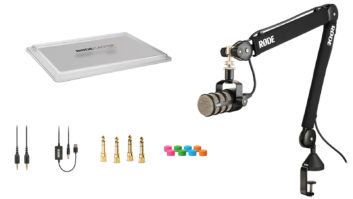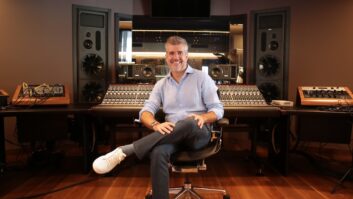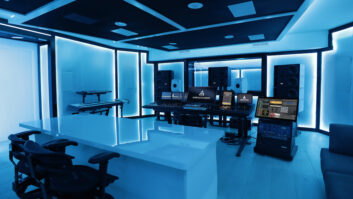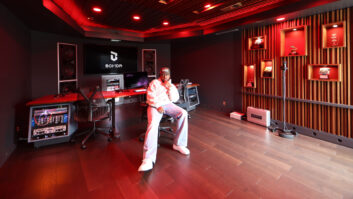CANNON FALLS, MN—Listen to Nirvana’s 1993 In Utero album, from “Serve the Servants” to “All Apologies,” and you will be transported to the storied Pachyderm Studio, where the live room’s signature ambience imprints every track. The studio later succumbed to the vagaries of the record business and fell into disrepair, but Pachyderm recently relaunched following a major renovation and is now putting its thumbprint on a new generation of music.
Situated on three acres of wooded countryside near a small town in rural Minnesota, the estate was initially home to a 5,000-plus-squarefoot five-bedroom house, built in the mid-sixties, to which a separate 3,500-square-foot recording studio was added in 1988 by its next owner. Some iconic albums came out of Pachyderm in its nineties heyday, including PJ Harvey’s Rid of Me, Superchunk’s Foolish and Live’s Throwing Copper, and it became producer Steve Albini’s home away from home. But the facility’s absentee third owner left it to molder, and tales of varmints and vegetation encroaching on the buildings emerged.
The late John Kuker, whose Seedy Underbelly studio had long since relocated from nearby Minneapolis to Los Angeles and New York snapped Pachyderm up after it went into foreclosure in 2011. He set about restoring the studio to its former glory, under the direction of Nick Tveitbakk, who began working with Kuker 16 years ago. After Kuker’s untimely passing in early 2015 his family assumed ownership.
“John’s family, who I’ve known for as long as I’ve known John, asked me for help. They’re amazing people, just like John,” says engineer and producer Tveitbakk, who is now also Pachyderm’s studio manager. “They didn’t know what a Neve 1081 was, or what it was worth. But they knew we should carry on.”
Pachyderm threw open its doors in mid-October 2016 to announce its reemergence on the scene. But in truth, says Tveitbakk, work had barely paused during renovations.
“We knew enough producer friends through John, like Nick Launay from England and Francois Tétaz from Australia. We didn’t need to be this entity putting ourselves out there with a website.”
The studio is a classic eighties Westlake-style design, he says. The centerpiece of the large control room is a vintage API Discrete console that was formerly at Seedy Underbelly.
“That studio had a long run of tons of records,” he reports; Launay alone, who worked at the L.A. studio for over a decade, recorded and mixed projects by Nick Cave and the Bad Seeds, Yeah Yeah Yeahs, Arcade Fire, the Veils and Silverchair through the API desk.
Seedy Underbelly’s operations were wound down after Kuker died, so Pachyderm currently houses enough gear for three studios. The Pachyderm website’s equipment list is overwhelming. “That’s not even all of it,” laughs Tveitbakk. “That’s just what we knew at the time was working.”
The credenza is packed with vintage Neve modules. “They’re used on every session. There are 24 channels in the rack: 1064, 1081, 1073 and 1084. Then there’s an extra eight 1081s if we need them. They’re pristine; Vintage King has helped us broker gear and keep things maintained.”
In its early days, Pachyderm Studio recorded mainstay albums by Nirvana, Live and PJ Harvey and was renowned for its live room.

A pair of Esoteric Audio Research 660 valve limiters are also go-to pieces for Tveitbakk: “Those get used all the time, on every mix.”
The mic locker is similarly packed with classics. “We have just about every Neumann microphone you could ever want,” he says. “The 47 is a staple, and now the 67s from California are here—we’ve been using those a lot lately.”
Pachyderm’s large live room features windows overlooking the woods and a trout stream. “It’s an amazing sounding live room. I can put up the [AKG] C 24 and that sound is always in that room.”
Tveitbakk says that the vibe in the room often encourages musicians to record together. “There are four iso booths that can be wide open or shut off, so there are a lot of options.”
He recently completed a project with Wisconsin bluegrass band Horseshoes and Hand Grenades, produced by Trampled by Turtles frontman Dave Simonette. “We recorded with everyone in the same room together. Sometimes we would shut a door to isolate a vocal mic. No one got into any arguments; no one struggled with not being able to play something. It’s always like that here.”
Simonette brought his band in during the renovation and recently returned with his solo project, Dead Man Winter, which made full use of Pachyderm’s tape machines. “We have an older Ampex MM-1200 that was owned by Mike Spitz, who did ATR services, and his ATR102, which I use on every mix,” says Tveitbakk. “We also have a Studer A827. If the budget allows for it, we always go to tape.”
With Dead Man Winter’s tape tracks, he says, “When I dumped them into the computer, Dave said, ‘Don’t edit out the drums when they’re not playing to get rid of the hiss.’ They wanted to record at low speed and lo-fi it a little bit.”
Tveitbakk comments, “People zone in on the energy here. We’re only 40 minutes from Minneapolis. There are nights where we’re on a long session and we all go to the city and have dinner and hang out. Then we feel weird that we’re not at Pachyderm and come back home and feel comfortable again.”
Pachyderm Recording Studio
pachyderm-studios.com
